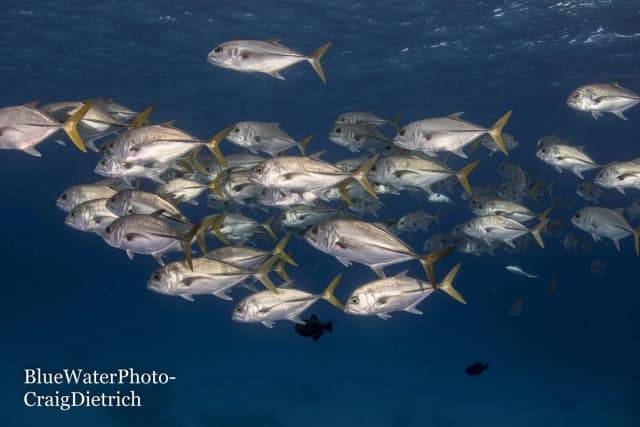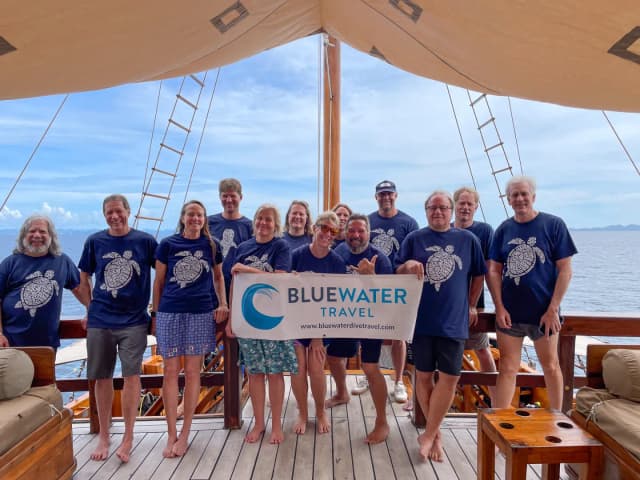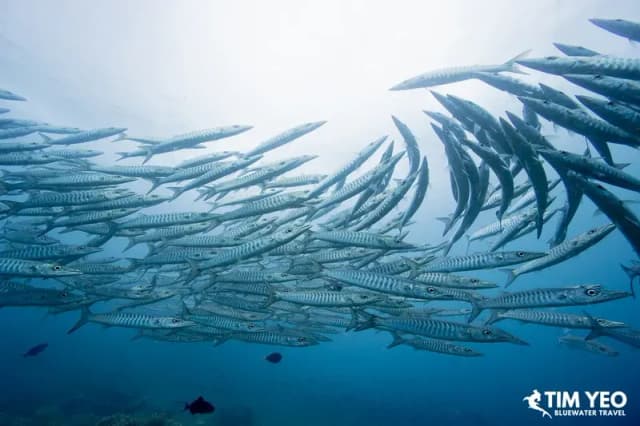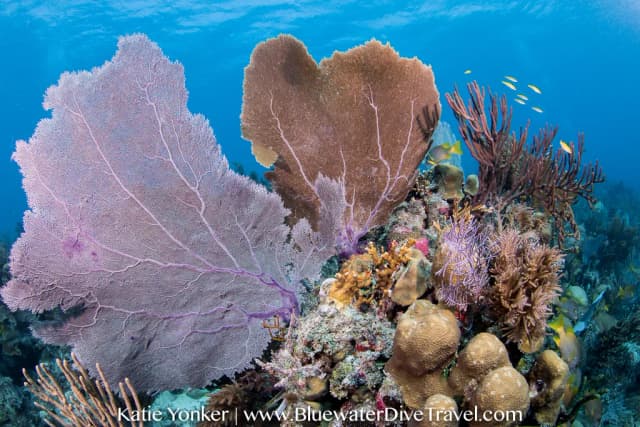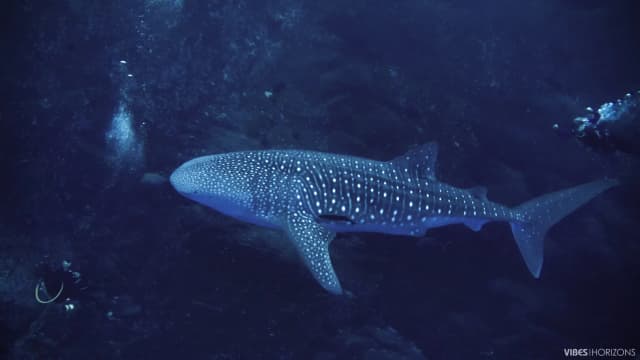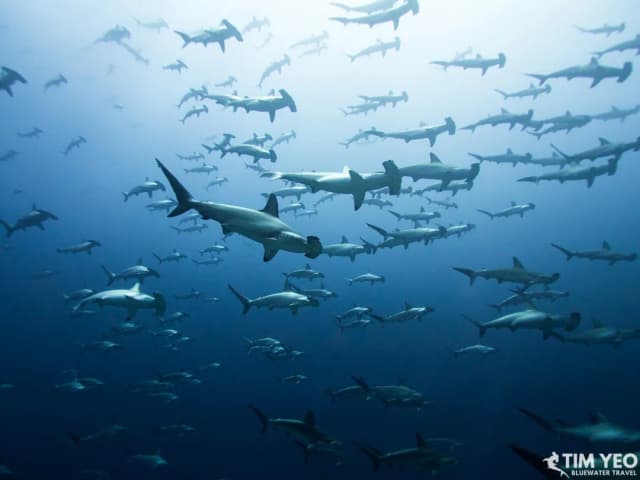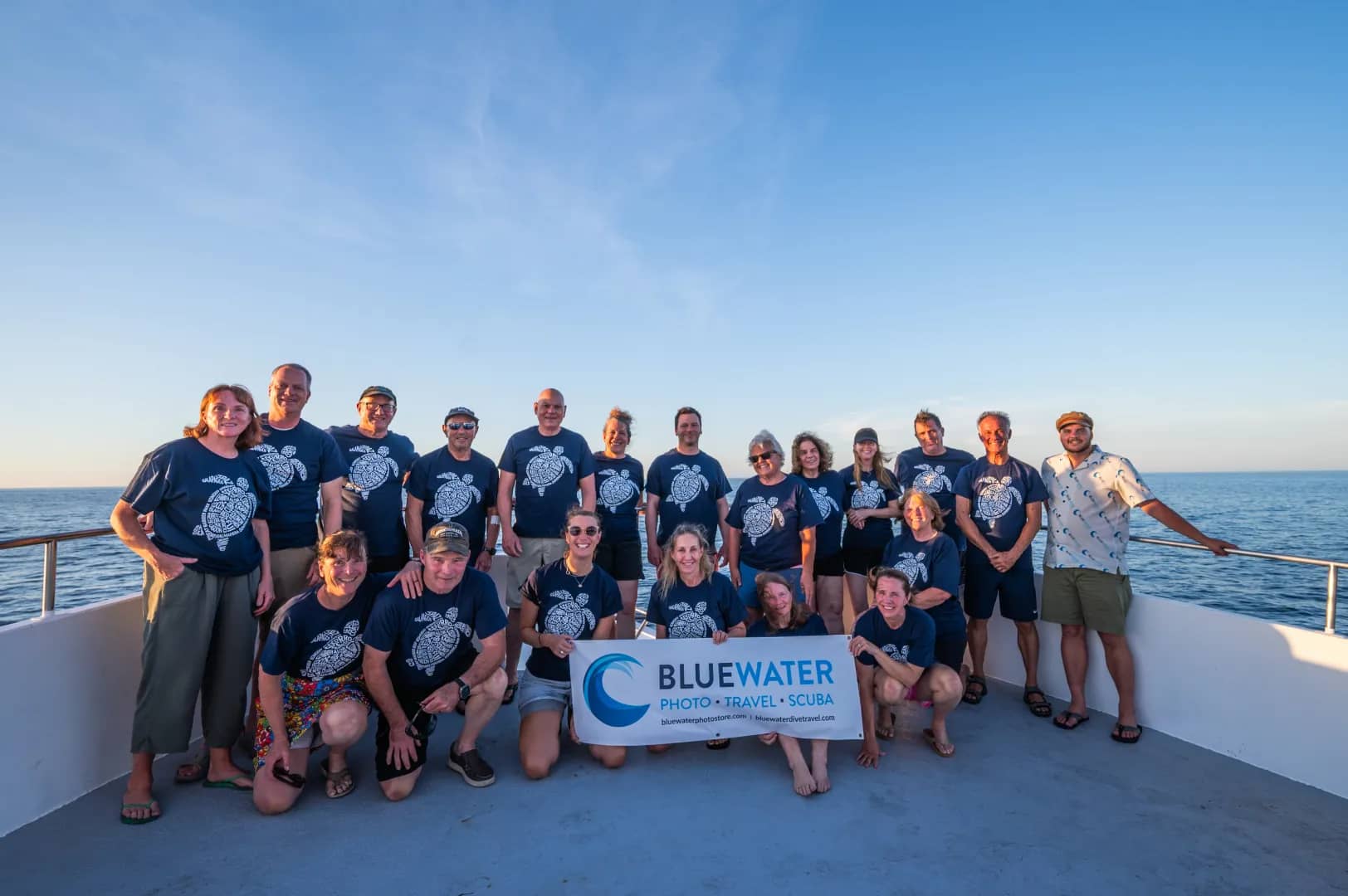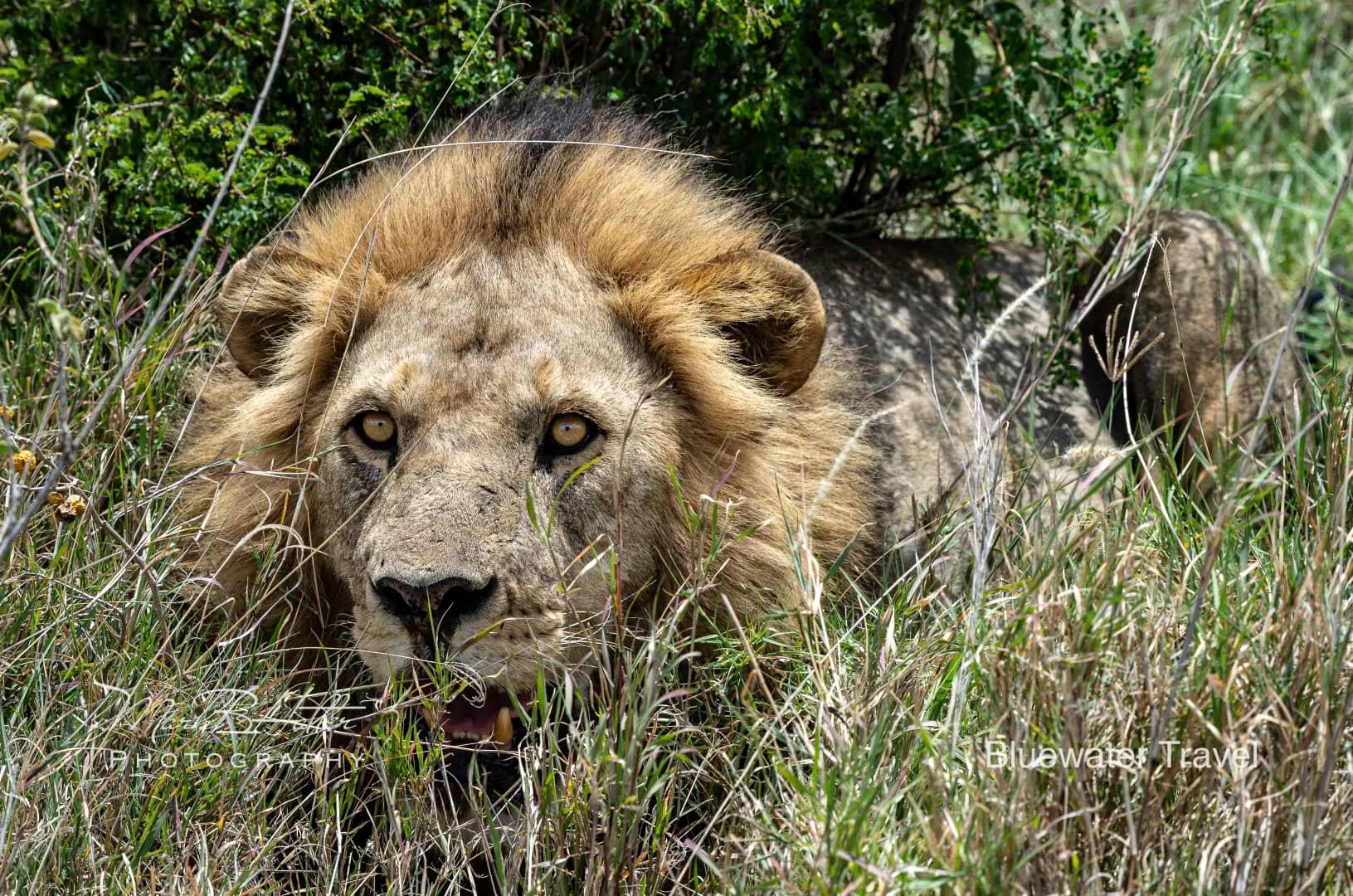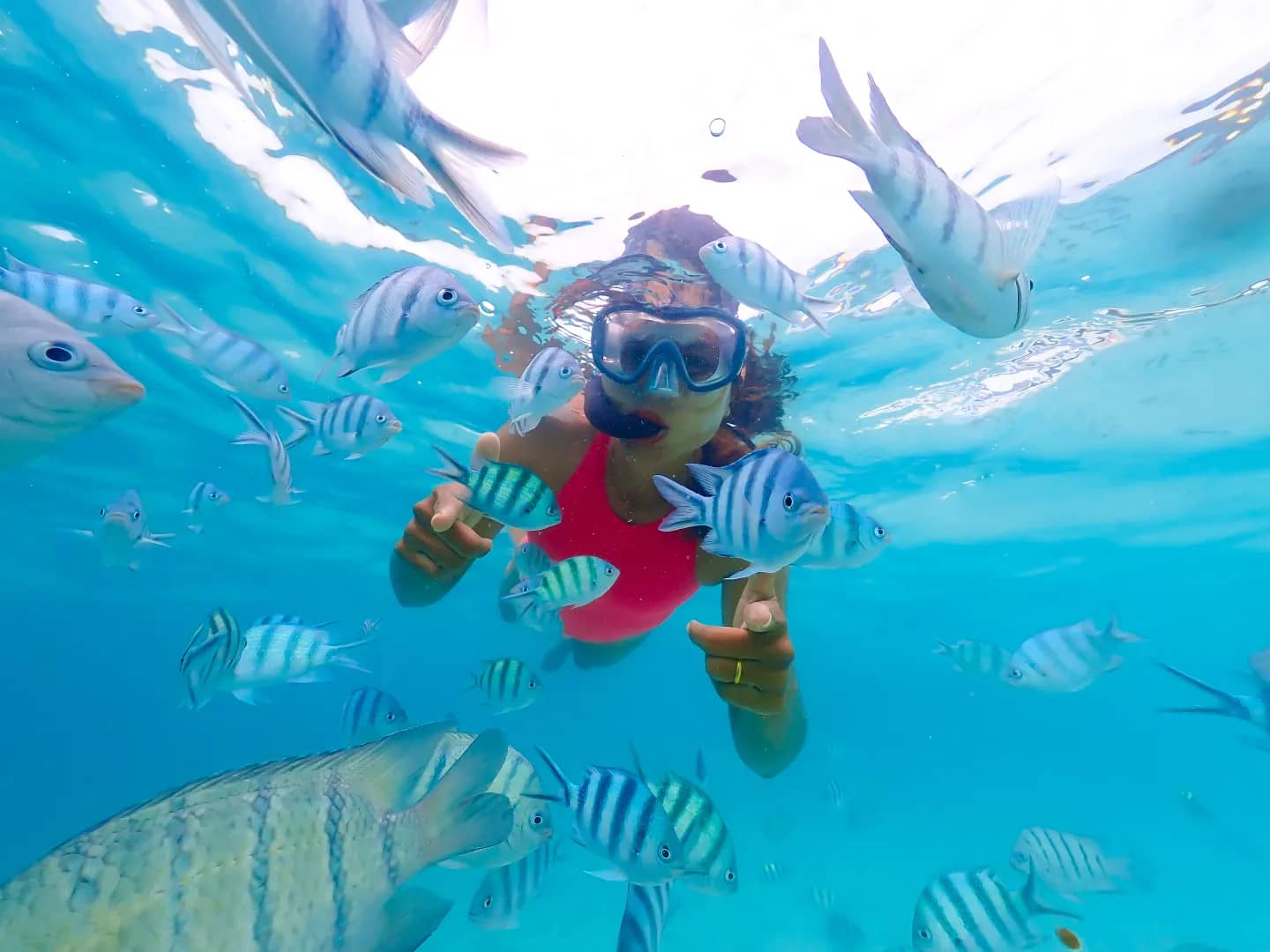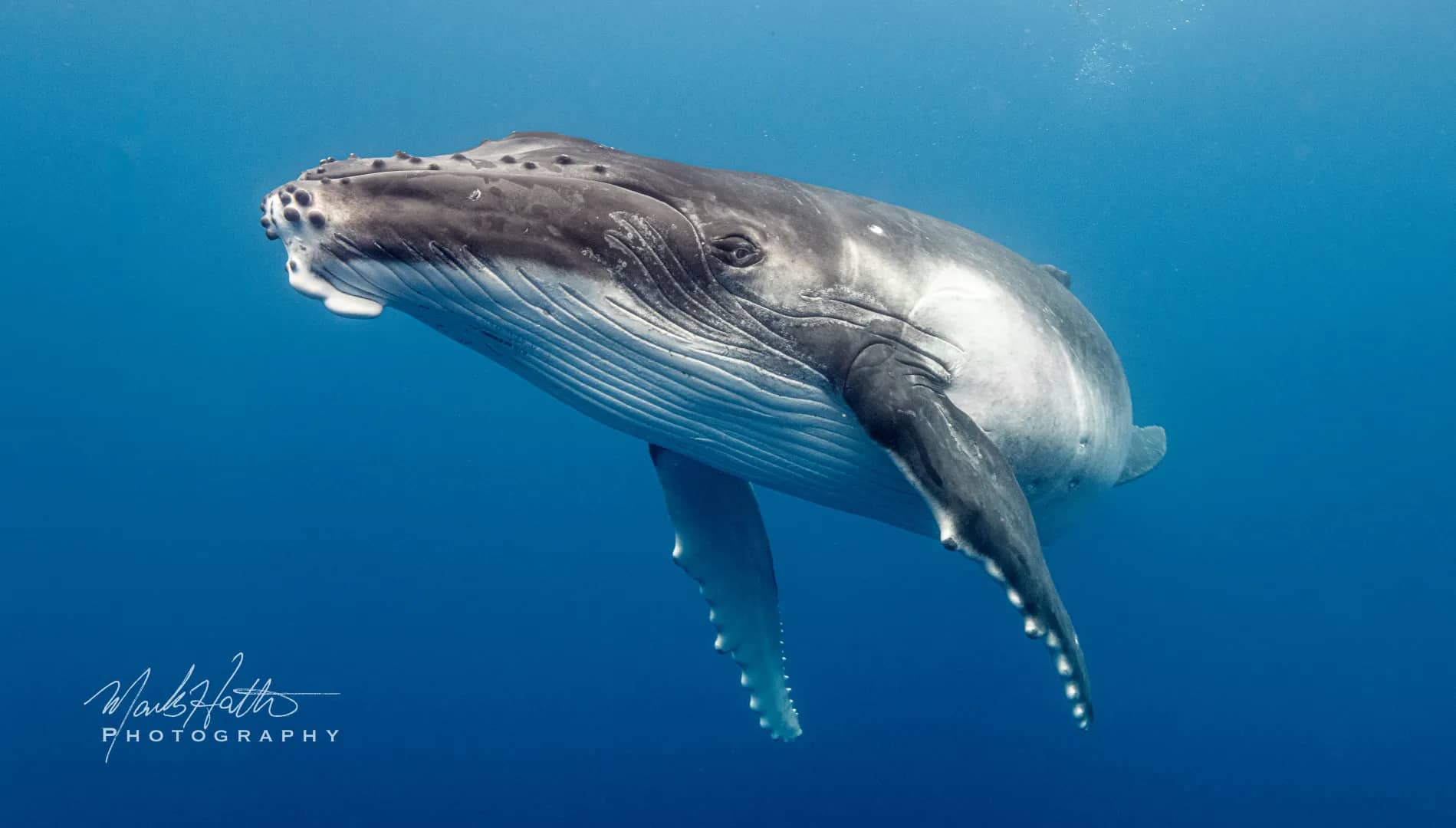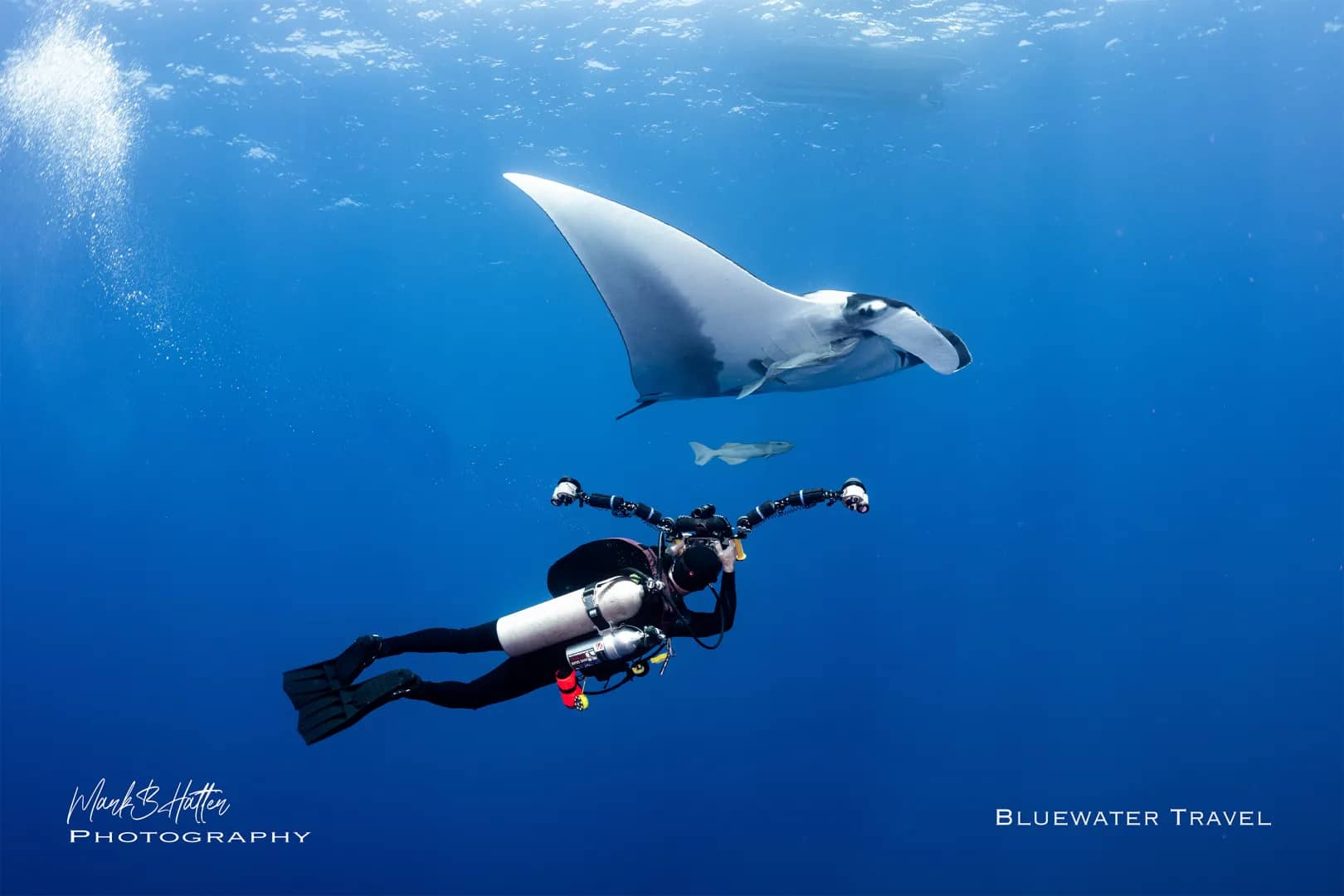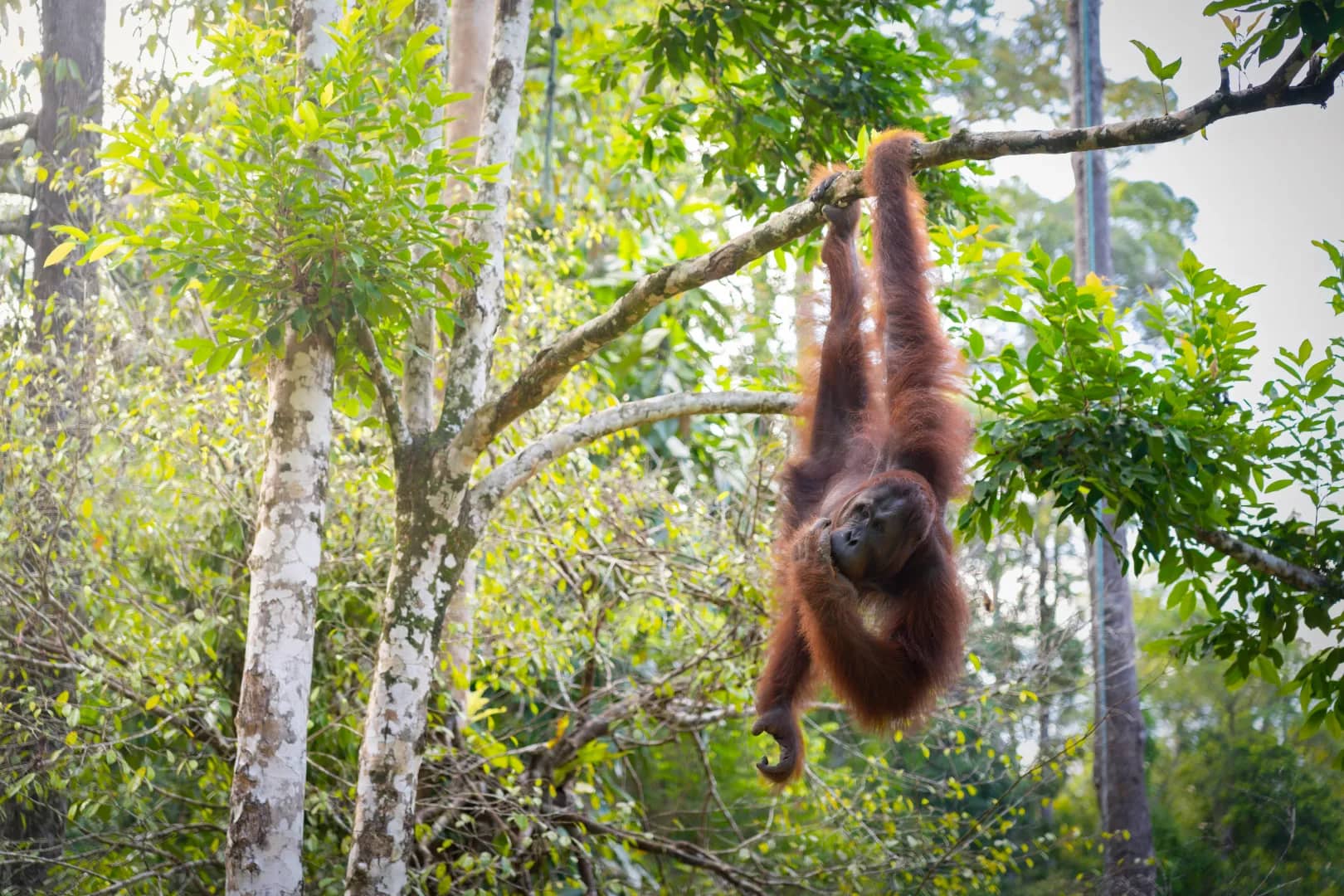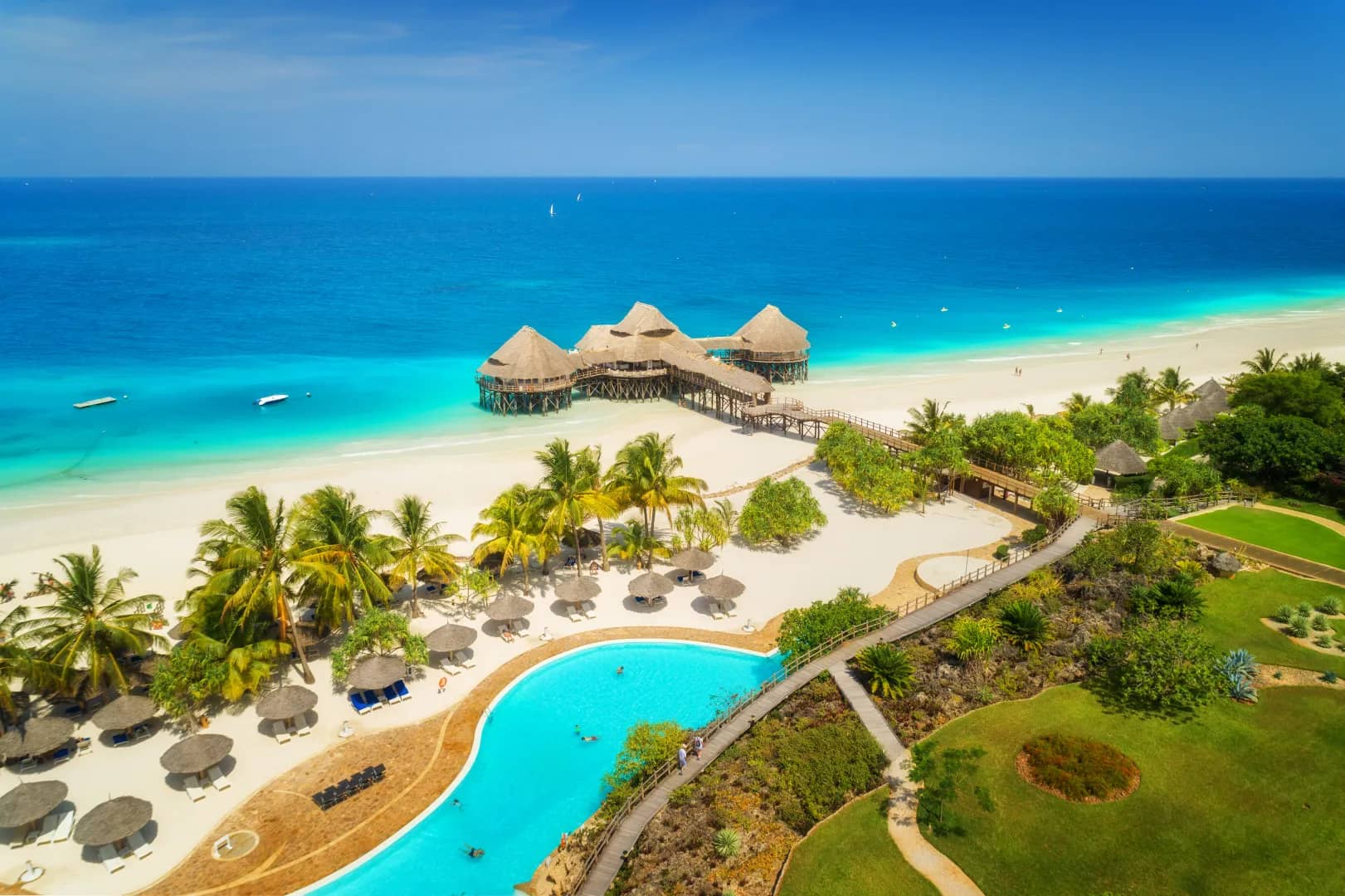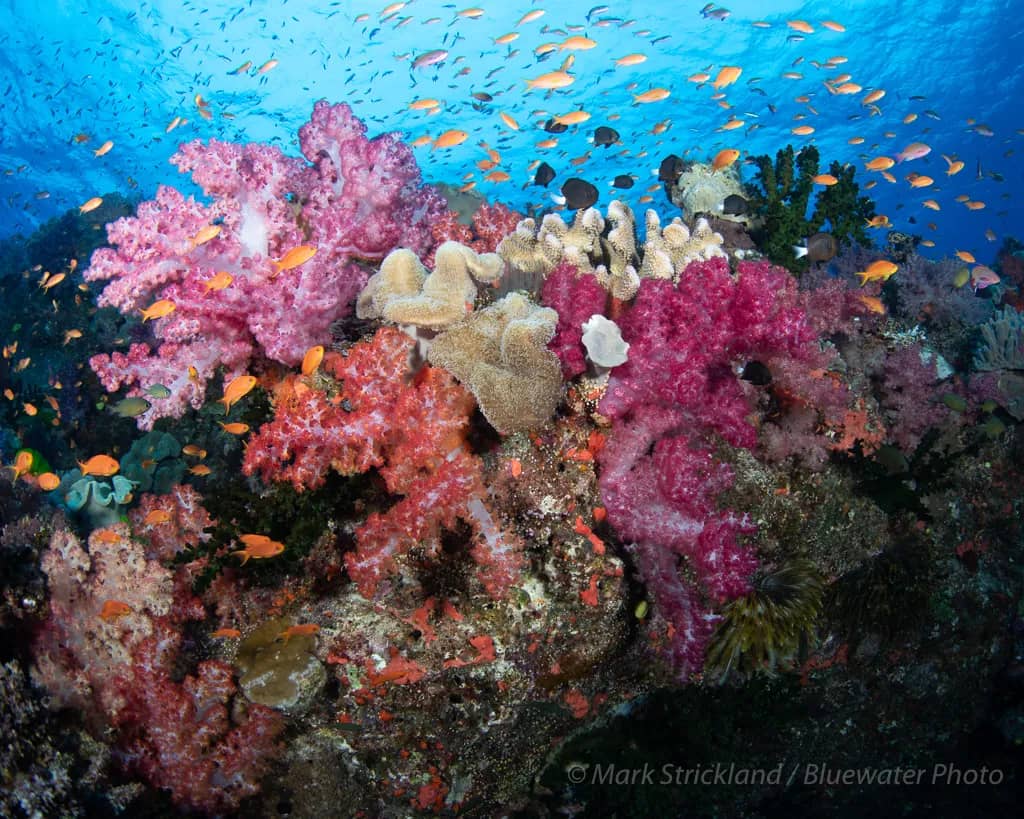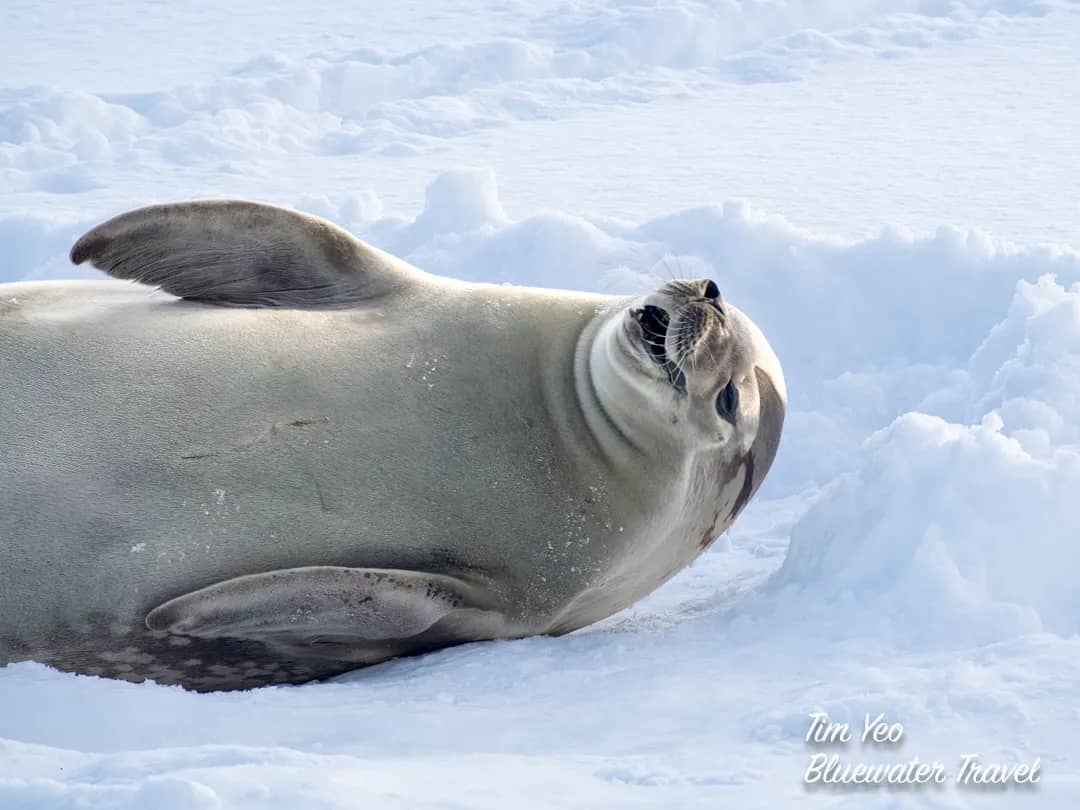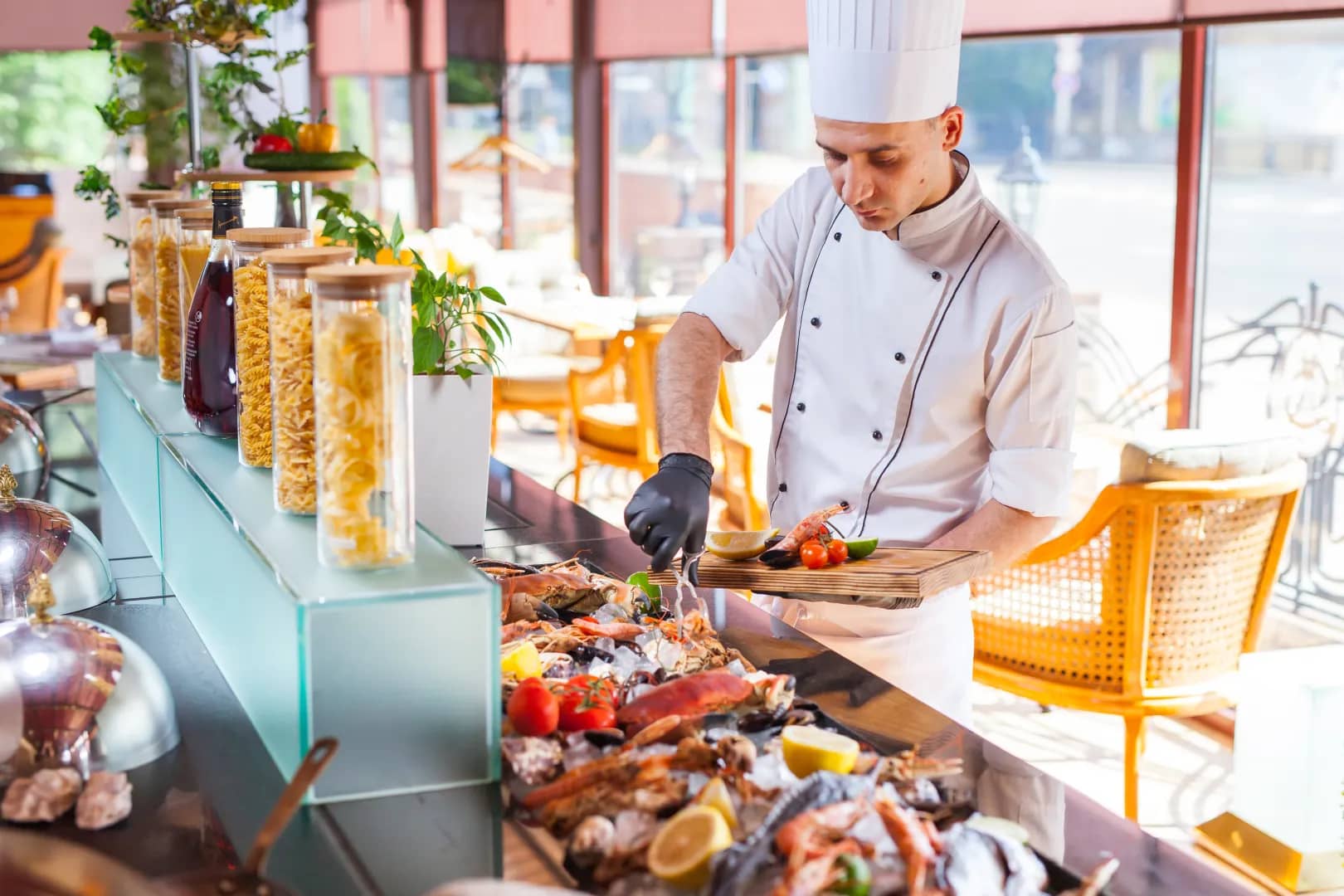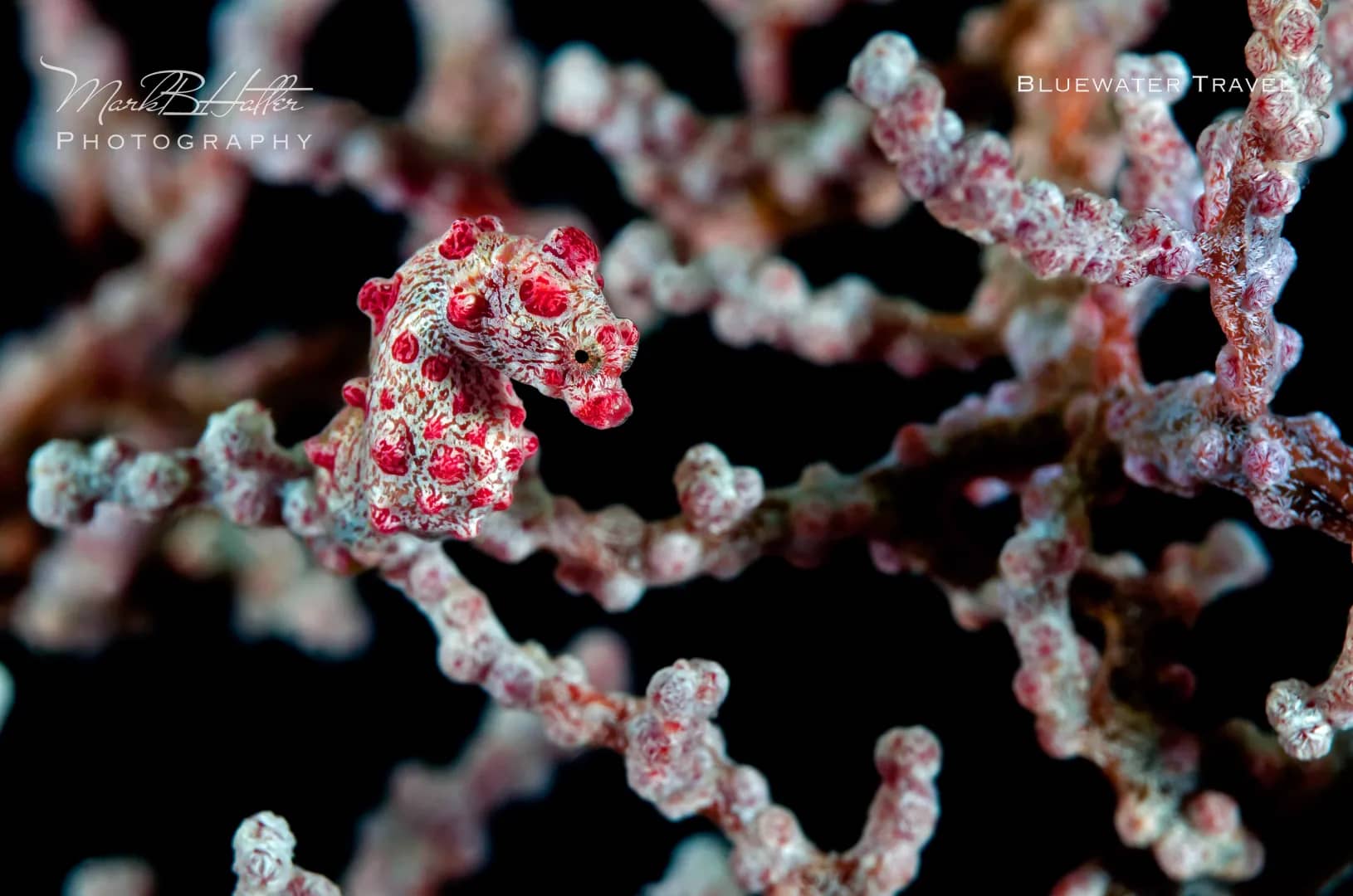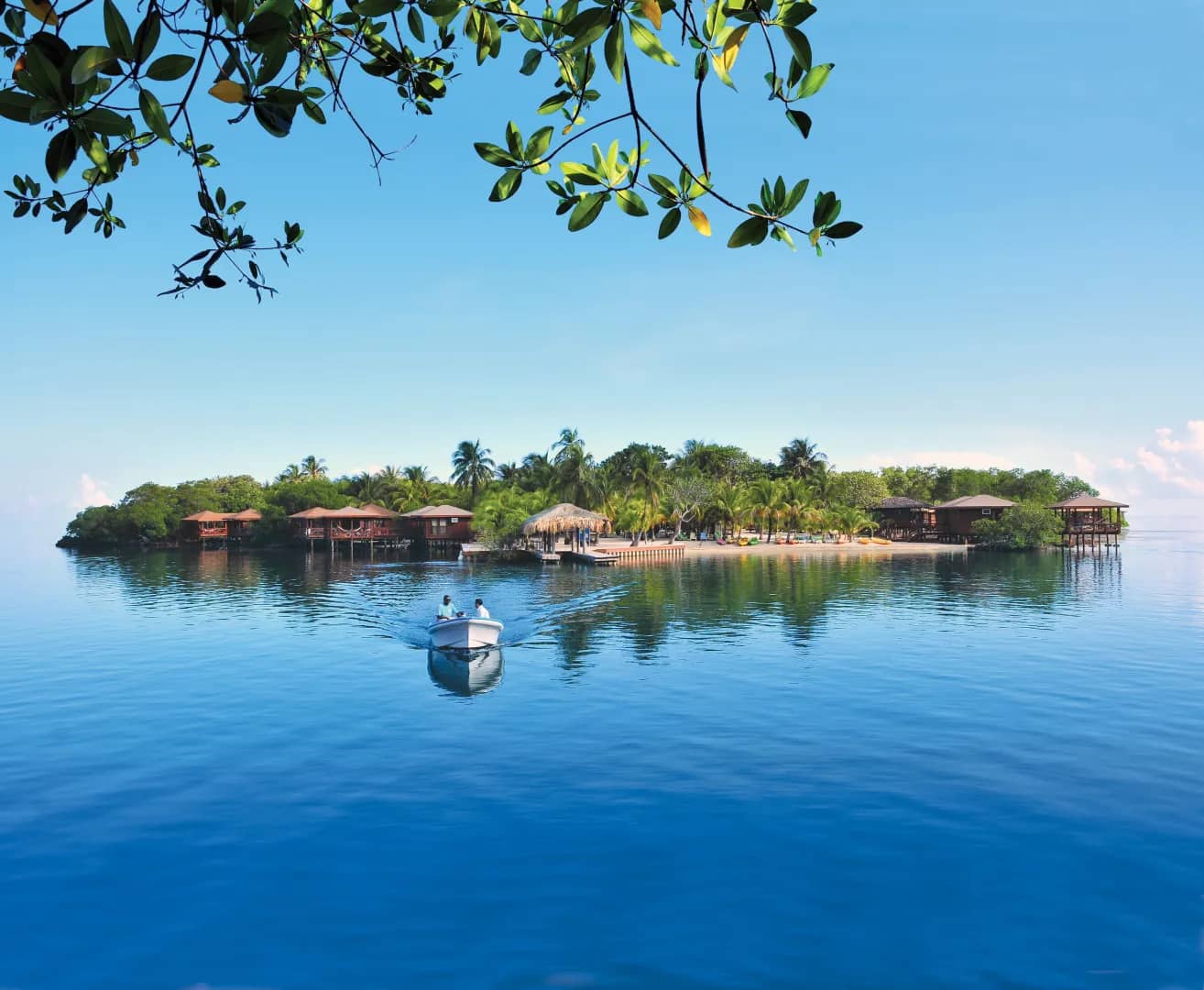Best Coral Reefs in the World - Top 6
Coral reefs are the foundation of our underwater ecosystems, providing both food and protection for marine life. At the same time, they play an important part in the diving experience, ensuring that every dive is a colorful experience.
Here at Bluewater Travel, we have the privilege of conducting dozens of trips and photography workshops in countless scuba diving destinations around the world every year, many of which have amazing coral reefs! To make it easier for you to choose your next vacation spot, we've rounded up a list of the world's 6 best coral reef destinations, for scuba diving and snorkeling.
1. Raja Ampat, Indonesia
Raja Ampat is located at the intersection of the Indian and Pacific Oceans, right in the heart of the prestigious Coral Triangle. The powerful deep sea currents funnel nutrients into the coral reefs, making Raja Ampat a “species factory.” Home to over 600 species of hard coral, or about 75% of the total in the entire world, Raja Ampat contains the richest coral reefs on the earth.


In Raja Ampat, you can see a profusion of gorgonians in a wide range of colors. Photographed by Mark Strickland while leading our annual Raja Ampat photo workshop.
Aside from colorful corals, divers who visit Raja Ampat can also see nearly 1,300 species of tropical fish, rare and endangered sea turtles, and other marine animals, including some endemic species such as the Raja Ampat epaulette shark, also known as the walking shark; the tasseled wobbegong shark; and the Papuan garden eel. Larger marine animals, including manta rays, are also frequently spotted at some of the sites, such as Manta Sandy in the Dampier Strait.
Some of Indonesia's best diving can be found in the Dampier Strait, a vast area which separates the islands of Waigeo (North) and Batanta (Central Raja Ampat); and Misool Island which is located in South Raja Ampat.
Raja Ampat has vast amounts of colorful soft corals and large sea fans. Huge coral bommies are often covered with schools of fish, hard and soft corals, and sea fans. These corals are prevalent in both the northern and southern areas of Raja Ampat, near Cape Kri and Misool.
"Diving through the southern sites of Boo Windows, Majic Mountain, Whale Rock, and Nudi Rock, I came upon endless fields of beautiful soft corals, massive coral bommies, and gorgeous sea fans. The amount of fish and invertebrate life was staggering, as was the biodiversity. The dive sites are awash in beauty. I can highly recommend putting a Raja Ampat trip near the top of every diver's dream list." - Bluewater owner Scott Gietler




The rare wobbegong shark (left) and blue-ringed octopus in Raja Ampat (right). Photos by Scott Gietler and Katie Yonker.




A manta ray and corals at Misool Island in southern Raja Ampat. Photos by Katie Yonker.
"From its azure blue waters and picturesque green jungle islands to the expansive healthy hard and soft coral reefs below abounding with marine life, Raja Ampat is a destination that even seasoned divers will enjoy. The hard coral reefs are unmatched in their extent and health, often stretching unbroken as far as the eye can see. When currents flow, you will find colorful soft corals in every color of the rainbow. Raja Ampat offers an excellent variety of all creatures, large and small, and should be at the top of every diver’s bucket list." - Katie Yonker
Cape Kri, which lies not far away from the Dampier Strait, is also often referred to as the most diverse dive site in the world when it comes to fish life. Dr. Gerald Allen documented 374 species of fish here in a single dive--a world record!
Misool Island is replete with colorful soft corals as well as abundant mangrove forests. There are even some places where you can see both together, with soft corals growing on the mangrove roots themselves, giving underwater photographers the opportunity to capture the unique sight with their wide-angle lenses.
Liveaboard or Dive Resort?
Liveaboard diving is the way to go if you want to visit Raja Ampat's diving spots, from north to south, in a single visit. There are many great liveaboard options in Raja Ampat, from budget to luxury. Some of the world's most luxurious liveaboards, such as the Arenui and the Damai I can be found in Raja Ampat.
However, if you prefer spending some time on land, there are a good number of great land-based options available. Most dive resorts in Raja Ampat offer iconic over-the-water bungalows. Some of the resorts offering such bungalows include Misool Resort in the south, and Papua Paradise Eco Resort, Papua Explorers Dive Resort, and Kri Eco Resort in northern Raja Ampat.
View all liveaboards OR dive resorts in Raja Ampat
How to Get There
There are several routes to Raja Ampat, but one of the easiest ways is to fly to Jakarta (CGK) and then on to Sorong (SOQ). We recognize how challenging it can be to get around Indonesia, so we've prepared a guide to booking domestic flights. Most dive resorts and liveaboards provide return transfers from and to the airport either for free or with a reasonable surcharge.
Please note that some liveaboards may depart from a different port, depending on your chosen itinerary. Always consult with your dive operator or travel advisor prior to booking your flights.
Practical Info
- Diving Season: October to May. Northern Raja Ampat is accessible year-round.
- Water Temperatures: 28-30 °C (82-86°F)
- Wetsuit: 3mm wetsuit or a shorty, but a full wetsuit is still recommended to avoid bites and cuts.
- Snorkeler Friendly?: Yes
Need more options? View all liveaboard and dive resorts in Raja Ampat
Read also our Raja Ampat Trip report to get a glimpse of diving there.
2. Solomon Islands
Also part of the Coral Triangle, the reefs in the Solomon Islands contain around 494 coral species, making the Solomon Islands one of the most diverse coral systems in the world. With a total coral reef area of 3,591 km², various marine life such as whales, dolphins, dugongs, and turtles thrive.






Breathtaking corals in the Solomon Islands, including healthy hard corals. Photos by: Bluewater trip leader and photo professional Mark Strickland.
In the Solomon Islands, you'll see coral gardens in areas such as Kaukau, while at a seamount known as Twin Tunnels, you'll find various fans and black coral trees. There are also big coral cabbage formations, particularly at Ghavutu Island near Tulagi, and at Leru Cut, there are huge orange fan corals and red sea whips. The Solomons also have amazing underwater crevices and structures that create some of the most beautiful underwater seascapes in the world.
Some of the best places for diving in the Solomon Islands are Mary’s Island and Barracuda Point.
One of the best coffee table books ever published, featuring underwater photography, is "Within a Rainbowed Sea," by Chris Newbert. A large number of the photos in that book were photographed in the Solomon Islands.
"The Solomon Islands offer a tremendous variety of underwater terrain and habitats, with coral gardens, walls, muck, pinnacles, fringing reefs, caverns & crevices, and a wealth of WWII plane and shipwrecks. Being part of the 'Coral Triangle,' marine biodiversity is also outstanding, with a huge range of fish and invertebrate species. In addition, there are great opportunities for cultural interactions with the islanders, lots of unspoiled natural scenery, and end-of-the-world ambiance… truly an exotic destination.” - Bluewater trip leader Mark Strickland


Kimbe Bay offers a wide spectrum of underwater habitats, including coral gardens, pinnacles, drop-offs, and mucky slopes. Marine life is similarly varied and reflects the outstanding biodiversity associated with its location in the famed 'Coral Triangle.
Most sites feature hard and soft corals, sponges, and gorgonians and are home to a great variety of critters and reef fish. Many also feature schooling species like spadefish, jacks, and barracuda. There’s also a healthy population of sharks, and marine mammals like dolphins and pilot whales are encountered with some frequency. This region is also home to a number of historic downed planes and shipwrecks, including a largely intact Japanese 'Zero' fighter plane. Best of all, there is relatively little diver traffic, so you’re likely to have sites all to yourself!"




While there are fewer corals than in other areas in PNG, Milne Bay offers excellent diving with beautiful corals at some of the sites. Samarai Island and Government Pier host excellent macro biodiversity, with various octopuses, mantis shrimp, razorfish, crocodilefish, and many more. Then there’s also Gunabalabala, which is chock-full of manta rays and incredibly beautiful nudibranchs.
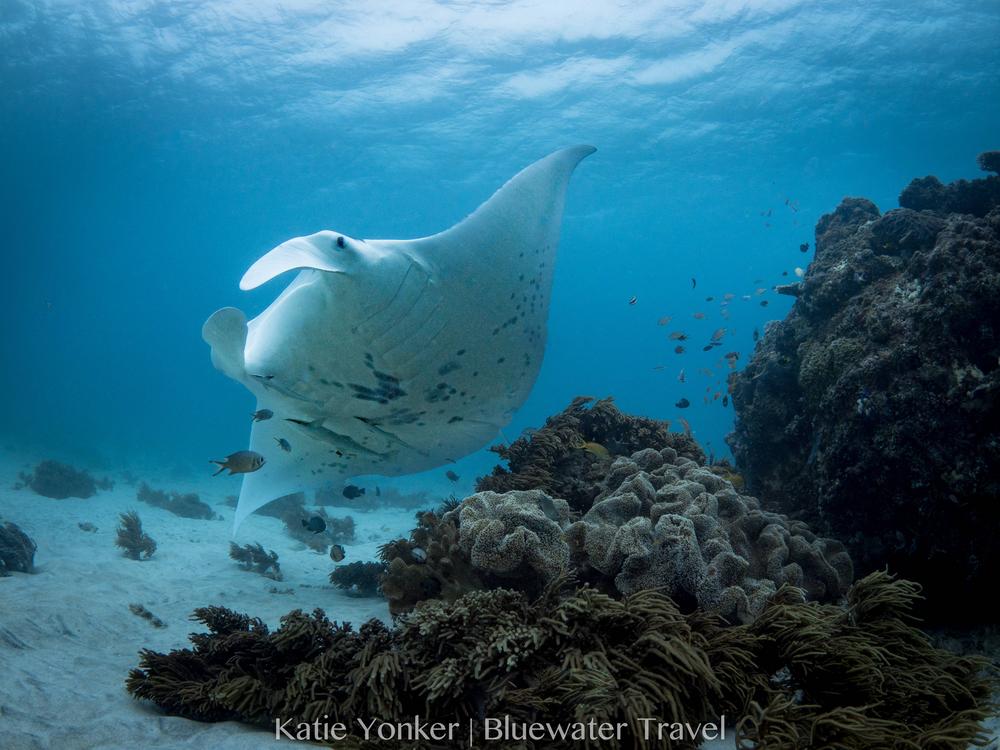



Photos by Bluewater's travel advisor/trip leader Katie Yonker, taken while leading a trip to PNG in 2018.
There are also a good number of land-based cultural opportunities on a trip to PNG. Papua New Guinea is a place to see traditions and lifestyles you will not witness elsewhere in the world. There are over 7,000 different cultural groups in PNG, bringing unparalleled richness and diversity in art, dance, weaponry, costumes, singing, music, architecture, and much more.
You can also visit different villages in PNG and witness a courtship or mourning demonstration, a fire ceremony, and performances by the "Mud Men" of PNG's Western Highlands. You can also observe the country's unique agricultural and farming practices and be treated to a sing-sing, a gathering of the local tribes where they present their distinct culture, dance, and music.
Liveaboard or Dive Resort?
Liveaboard diving is a great way to explore PNG's many islands and beautiful dive sites. MV Oceania, MV Febrina, and Solomons Master are great options. If you prefer to stay on land, check out Walindi Plantation in Kimbe Bay or Tawali Dive Resort in Milne Bay.
View all liveaboards or dive resorts in Papua New Guinea.
How to Get There
Fly to PNG from Australia, either through Brisbane (BNE) or Cairns (CNS) or from one of several Asian capitals, including Singapore (SIN), Hong Kong (HKG), Manila (MNL), and Tokyo (HND). You can also come from Truk (TKK) or Honiara (HIR).
Diving Conditions
- Diving Season: Year-round, with May to December being the peak season. But it may vary depending on where in PNG you'd like to dive. Contact us for assistance.
- Water Temperatures: 27-31°C (81-88°F)
- Wetsuit: 3mm wetsuit or a shorty, but a full wetsuit is still recommended to avoid bites and cuts.
- Snorkeler Friendly?: Yes
View available liveaboards and dive resorts in PNG.
Read our Papua New Guinea Trip Report to have an idea of what it's like to dive there.
4. Fiji
Fiji is an archipelago located in the South Pacific Ocean. Its islands and people have been mostly left untouched by the modern world. Containing over 10,000 km² of coral reefs, Fiji contains 42 percent of the world’s coral species (around 390 species). Often referred to as the soft coral capital of the world, the array of colors that corals in Fiji will present to you is nothing short of dazzling.
The best places to see these soft corals up close and personal are the Bligh Waters between Viti Levu and Vanua Levu, which is replete with coral reefs and pinnacle; the Somosomo Strait found between Taveuni and Vanua Levu, as well as the marine protected area at Namena Island.


Fiji reefscape photo by Bluewater trip leader Mark Strickland.
"Fiji has a reputation as the soft coral capital of the world, and divers who have been to Fiji can attest to that honor. The soft coral gardens found at dive sites around the Bligh Waters and Rainbow Reefs regions in Fiji will mesmerize any diver with the cacophony of colors and multitude of anthias dancing around them. Bula!" – Bluewater travel advisor/trip leader Tim Yeo






Fiji's corals contain all the colors of the rainbow. Photos by Bluewater travel advisor/trip leader Katie Yonker.
One place to look out for in Fiji is the Rainbow Reef, home to the Great White Wall, famous the world over for the white coral proliferating in the area. Vatu-I-Ra Passage in the Bligh Water region hosts some of the best dive sites for soft coral gardens in all of Fiji. Dive sites like Mellow Yellow and Black Magic Mountain give Fiji its reputation as the soft coral capital of the world.
Fiji is also famous for its shark dives off Pacific Harbor and Beqa Lagoon, where divers can experience close encounters with bull sharks, tiger sharks, nurse sharks, silvertip sharks, and more.




And yes, you'll find sharks and turtles in Fiji as well.
Also, you’ll see more than 1,000 different types of invertebrates, 400 corals, and over 400 marine plants at Fiji’s Grand Central Station and Chimneys, which the Namina Marine Reserve has preserved. The tidal currents and warm waters make it the perfect place for soft corals to bloom. Turtles and 58 species of sharks frequent here as well.
Find out why Fiji is one of our top family-friendly dive destinations!
Liveaboard or Dive Resort?
Most divers dive from a resort in Fiji as there is only one dive liveaboard operating there. Fiji has excellent dive resorts like Volivoli Beach Resort or Paradise Taveuni that gives divers access to Bligh Waters and Rainbow Reef respectively. If you prefer to liveaboard diving, the Nai'a Liveaboard is a great choice. However their trips fill up early, so book your trip on the Nai'a in advance!
View all dive resorts in Fiji, or find out why Volivoli is our Preferred Partner.
How to Get There
Since Fiji is very tourist-friendly, there are flights directly from Los Angeles (LAX) to Nadi (NAN), the capital. Coming from elsewhere, it’s easiest (and fastest) to fly from Australia, since Fiji is just four hours away from Sydney (SYD), or seven hours from Auckland (AKL), New Zealand. If you are going to other islands, you’ll take a plane or a boat from Nadi.
Diving Conditions
- Diving Season: May to October is the peak season for diving, but Fiji can be dived year-round if you don't mind short bursts of rain.
- Water Temperatures: 26°- 31°C (79-88°F)
- Wetsuit: 3mm
- Snorkeler Friendly?: Yes
5. Red Sea
Considered one of the seven wonders of the underwater world, the Red Sea is located in the northernmost part of the Indian Ocean and is rimmed by shallow submarine shelves and extensive fringing reef systems. The reefs here are approximately 1,200 miles long and over 5,000 years old. Over 300 hard coral species make their home here, with the dominant corals being Acropora and Porites.
When diving in this part of the world, you'll see significant differences between the northern Red Sea and the southern Red Sea, with the former being home to more wrecks, including the world-famous Thistlegorm. It's also an excellent location for swimming with dolphins.
But if it's corals you're looking for, then the southern Red Sea is the place to be since this is where the best soft coral gardens can be found. Divers may also see plenty of sharks, mantas, and whale sharks, especially in the islands of Big Brother, Little Brother, Elphinstone, and Daedalus.
"Very few top dive destinations can be combined with amazing topside attractions, and the Red Sea is one of them. Apart from having some of the best soft coral gardens, good chances to see oceanic white tip sharks, hammerhead sharks, thresher sharks, whale sharks, and mantas, and some world-class wrecks, divers can also extend their trip to visit ancient temples, burial sites, and ruins in Luxor and Cairo." - Bluewater travel advisor/trip leader Tim Yeo




The Red Sea is home to large Green Turtles, as well as hard corals teeming with life. Photos by: Bluewater travel advisor/trip leader Tim Yeo.




Get ready to say hello to a Napoleon wrasse or even a whale shark during your dive in the Red Sea. Photos by Tim Yeo.
Liveaboard or Dive Resort?
The Red Sea is renowned for its wide selection of luxury liveaboards, which are more affordable than similar liveaboards in other dive destinations worldwide. The Blue Horizon, also known as the Red Sea Master, and the Emperor Elite are great options in the Red Sea. Another great choice is the Red Sea Aggressor II for liveaboard trips to the northern Red Sea.
View all Red Sea liveaboards
How to Get There
It’s easy, not to mention affordable, to get to Sharm (SSH), Hurghada (HRG), and Marsa Alam (RMF) from many cities in Europe. From the U.S., you can fly to Sharm directly as well, or to Cairo (CAI) first, and then get a connecting flight to Sharm.
Practical Information
- Diving season: Year-round
- Water Temperatures: Average at 30°C (86°F) in June to August and reaching its coldest at 22°C (72°F) in February.
- Wetsuit: 3mm in the warmer months and 5mm or 7mm in the colder months
- Snorkeler friendly?: Yes.
6. Alor, Indonesia
This list would be incomplete without mentioning another destination in the Coral Triangle renowned for its pristine coral reefs: Alor, Indonesia. Less visited and less famous than Raja Ampat, Alor's coral reefs benefit from cold thermoclines and strong currents in the Pantar Strait.


In Alor, you can see coral reefs carpeted in anemones. Photographed by Erik Lukas.
In addition to Alor's stunning coral reefs, divers can scour mucky bottoms for rare critters, including rhinopias, nudibranchs, seahorses, and tiny crustaceans. Those who prefer encounters with larger animals will also find plenty of satisfying dive sites at underwater pinnacles with strong currents that can bring in schooling hammerheads and the potential to spot the occasional thresher shark and mola.
Visit Anemone City to witness a reef carpeted with various anemones and the fish, crabs, and shrimp that inhabit them. Bakalang Jetty features concrete pillars adorned with striking soft and hard corals, providing spectacular wide-angle and macro photography opportunities.
"Sulambali Wall, covered in brilliantly colored healthy corals and teeming with fish... Anemone City is covered with healthy corals, but more striking is the abundance of anemones in every color, size, and shape imaginable. It was a week unlike anything I could have imagined in advance."
-
Bluewater trip leader Erik Lukas




A school of glass fish (left) and corals on Bakalang Jetty (right). Photos by Erik Lukas.
Liveaboard or Dive Resort?
One of the best things about Alor is the flexibility to dive its amazing sites from either a liveaboard or land-based resort. Boutique resorts boast exceptional views of the ocean and the surrounding volcanic islands and have incredible dive sites nearby. Options include Alor Tanapi , built into a lush hillside, Alor Divers , on a beach with muck diving directly in front, and Alami Alor , in a tropical forest with waterfront bungalows. Liveaboards are another great option, with the opportunity to combine diving Alor with other regions such as Komodo, Maumere, and the Banda Sea. These itineraries enable you to explore more of Indonesia's renowned dive sites, although there are more than enough amazing sites to spend a couple of weeks just diving in Alor. View all liveaboards in Indonesia.How to Get There
Getting to Alor requires multiple domestic flights from its major international airports, and we recommend the following options: Start in Jakarta (CGK), take a redeye flight to Kupang (KOE), then catch a connecting flight to Alor (ARD). Start in Bali (DPS) and fly to Kupang (KOE), where you'll need to stay overnight before catching a flight to Alor (ARD) the next day. Please note that some liveaboards may depart from a different region, depending on the itinerary that you choose. Always consult with your dive operator or travel advisor prior to booking your flights.Practical Info
- Diving season: March to December.
- Water Temperatures: Range from 20-30°C (68-86°F), with potential for even colder thermoclines.
- Wetsuit: 5-7mm full wetsuit, but it depends on your own comfort and how cold you tend to get
- Snorkeler friendly?: Yes.






